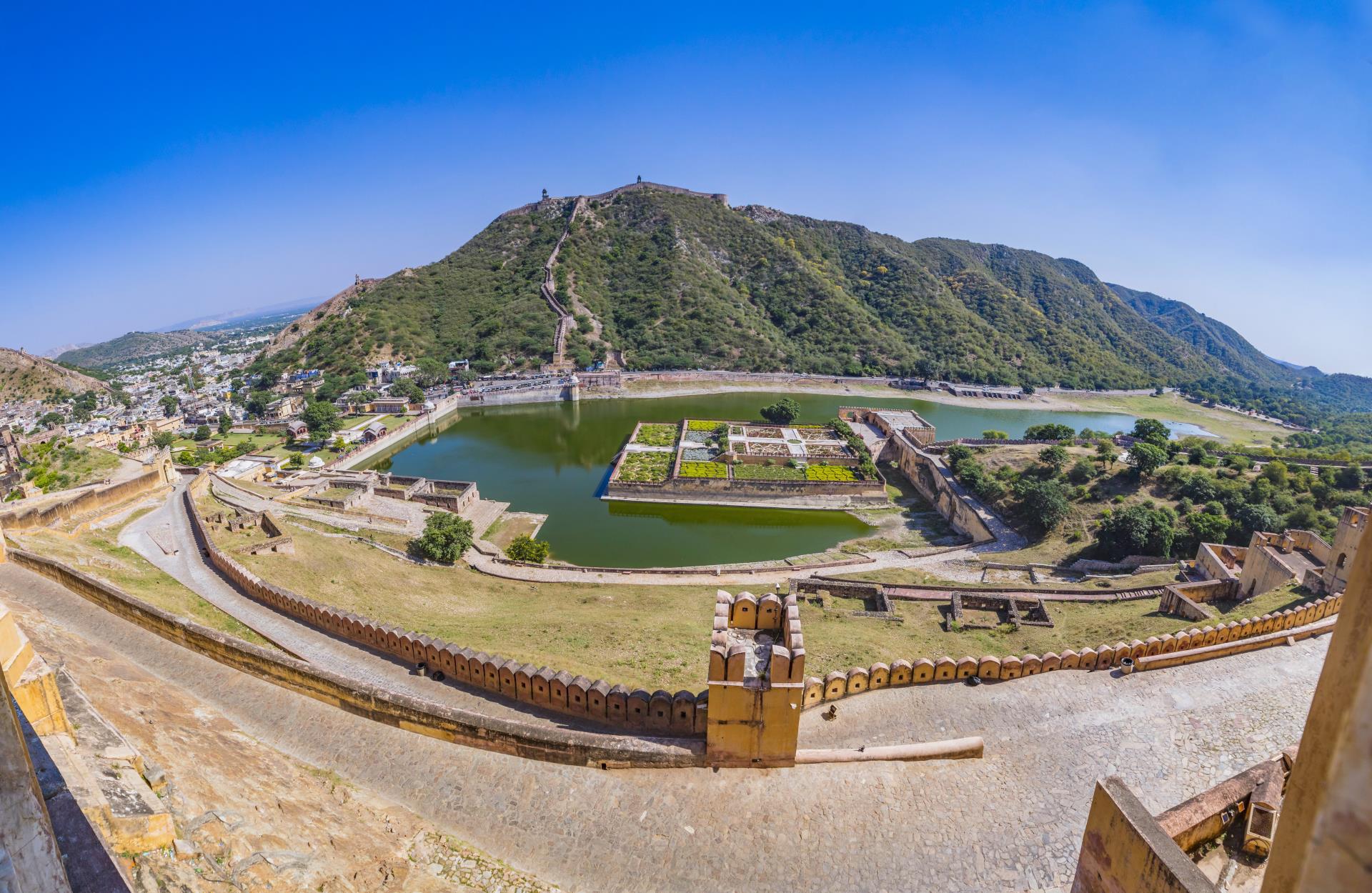
Sorry, we couldn't find anything that matches your search.
Destination

Famous Places to Explore in Hyderabad
A vibrant city with the imposing...

Raipur Tourist Places | Best Place to Visit
The stronghold of several erstwhile...

Ahmedabad
Declared as India's first UNESCO World...
#
Explore the world famous Hill forts of Rajasthan known for their glory , beauty and heritage.
* This embed is a third party content and available in English only.
Amber Fort

Just 11 km outside Jaipur, lies the magnificent Amber Fort (Amer Fort), sitting atop a hill, and rising like a sentinel guarding the city. Commissioned in 1592 by Maharaja Man Singh I, the fort is a fine blend of Rajput and Mughal architectural styles, and boasts a grand palace, temples and several ornate gates. Built entirely of red sandstone with white marble work, the UNESCO World Heritage Site is a picture of opulence and grandeur, set against a stark desert backdrop and rolling hills.
Chittorgarh Fort

One of the most glorious symbols of the indomitable Rajput spirit is the Chittorgarh Fort. Set atop a 180-m-high hill and spread over an area of 240 hectare, it presents a formidable sight. Legend has it that the fort was constructed by Bhima, one of the Pandavas from the epic Mahabharata. It is an imposing structure that rings with the stories and tragedies of the past and the tales of extraordinary men and women. A one-kilometre road winding through foothills leads to the fort and takes visitors through seven gates before reaching Rampol (gate of Ram), one of the entry gates still in use. While going from the second to the third gate, one can see two cenotaphs (chattris) that have been built in honour of Jaimal and Kalla, who laid down their lives during the siege by Mughal emperor Akbar in 1568. The main gate of the fort is Surajpol (sun gate).
Gagron Fort

A fort without foundation, Gagron Fort is an architectural wonder that is encompassed by water on all sides. Thus, it is also called Jaladurga. Constructed by Dod king Bijaldev in the 12th century, the fort is said to have withstood about 14 battles. It is replete with three ramparts, which is noteworthy as most forts have two, and two gigantic main gates. One of these leads to the river and the other to the hills. Some other important gates inside are Bhairavi Pol, Ganesh Pol, Kishan Pol, Nakkarkhana and Selekhana. Tourists can also pay a visit to such notable parts as Janaana Mahal, Rang Mahal, Diwan-i-Aam, Madhusudan Mandir, Diwan-e-Khas, etc.
Jaisalmer Fort

The piece de resistance of the lively Thar desert is a magnificent structure built from yellow sandstone, called the Jaisalmer Fort. Perched atop the Trikuta Hill (triple peaked hill), this imposing fort seems to rise straight from the desert and its gleaming stone fade gives the impression of it being an extension of the magnificent Thar. The magic of this architectural marvel is best witnessed at sunset when the whole fort seems ablaze as it reflects the light from the setting sun, earning it a spot on the list of UNESCO World Heritage Sites. The fort is known for its elaborately carved structure called Raj Mahal, the residence of the erstwhile royal family and the beautiful Jain and Laxminath temples it is home to. The fort also piqued the interest of Oscar winning Indian filmmaker Satyajit Ray, who featured it in one of his films Sonar Quila or the Golden Fortress.
Kumbhalgarh Fort

The impregnable Kumbhalgarh Fort, sitting on a high mountain ridge seems like an impression from the past. Soaring above the surrounding rugged mountainscape, at 3,600 ft, the fort can been seen much before one arrives at its foot. With the second-longest wall in the world, about 38 km long, the Kumbhalgarh Fort is recognised as a UNESCO World Heritage Site. Also, known as the Mewar Fortress, it was the birthplace of the great Rajput king, Maharana Pratap. Everything about the fort has been built to fend off the enemy. From its high position in the Aravalli Hills and its strong ramparts to the four main gates of Aaret, Hanuman, Hulla and Ram Pol, and the Badal Mahal, which was a great hindering force for the enemy, the fort was almost inaccessible. Moreover, the surrounding 13 mountain peaks and numerous watchtowers made it more of a challenge for the enemy. Historical records suggest that it was only once that the fort was besieged. Exploring the fort is an unforgettable experience. From its high vantage points, which provide sweeping views of the Thar Desert, to its beautiful interiors and various sections like the Badal Mahal and the Kumbh Mahal, there's much to see. There are as many as 360 Hindu and Jain temples inside the fort and devotees can pay obeisance at them. Tourists can also catch the light and sound show organised at the fort under the glittering stars. The fort was built by Rana Kumbha in the 15th century. It was renovated by Maharana Fateh Singh in the 19th century. The Tourism Department of the state government organises a three-day festival to pay a tribute to Rana Kumbha for this splendid architecture.
Ranthambore Fort

Occupying a prominent position atop a hill inside Ranthambore National Park, this mighty fort has withstood several sieges and still stands. It was built in the 10th century and acted as great protection for the Rajput kings against foreign invaders. It is said that Ranthambore Fort was captured by Prithviraj Chauhan in the 12th century, and finally occupied by Alauddin Khalji.
Visiting the fort is a fascinating experience as you can spot diverse fauna along the way. Moreover, several birds can be spotted at eye level as you slowly hike up.




